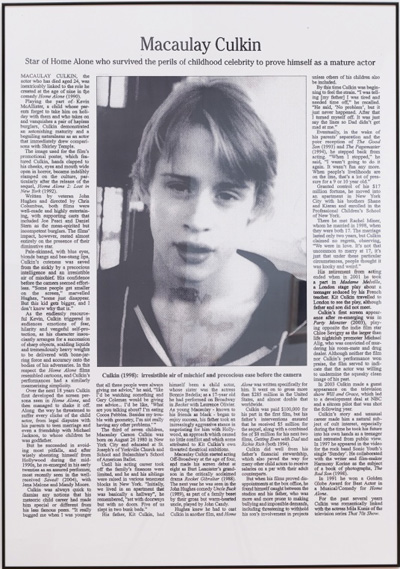
Continuing through July 28, 2012
One of the most intriguing things about the Goss-Michael Foundation – and there are many – is their willingness to ruffle feathers. They stir things up. Because they concentrate on British art, their contemporary shows often allude to Western mythological stories and archetypal images that have informed Western civilization for centuries. Whether you choose to adhere to (nearly) long-gone tenets is your own business. But everyone used to know these “stories” and their concomitant images.
I’ve seen countless pieces in the Foundation's collection that allude to Edenic exile, martyrdom, the glory of stained-glass windows – not to mention Christ and skull imagery that’s been serving as a leitmotif for Christian Golgotha and its ramifications for over two millennia. It’s all there – but it’s given a new context via YBA (Young British Artists) art that throws everything we’ve known as “tradition” into sharp relief.
Adam McEwen’s work is no exception. He works with graphite and, in part, his show gives us compressed replicas of everyday objects: a Friedrich air conditioner cover, a water fountain, an ATM machine — and perfectly symmetrical rows of office lights. The graphite pieces are dark and compressed. They suck up light like dark stars. “Rubber Maid Step Stool” is a no-brainer. It’s a metaphor for ascendancy. So what does it mean that it’s not luminous, that it’s made of solid stuff that soaks up every color in the spectrum when light is pitched through a prism? Ditto with the water fountain. Water is the stuff of which we’re made. It’s the element used to baptize us as infants and it’s referred to in countless documents as “living water.” And light? C’mon.
One of McEwen's more fascinating pieces is cordoned off and occupies its own deliciously separate space. It’s a “gum painting” from a series of canvases that are punctuated by chewed gum arranged in patterns that serve as Rorschach noggin busters. However, “Wiesel, Phosphor brand bomb,” while part of this gum painting series, is somewhat different. It sports a backdrop of glow-in-the dark paint and evokes the feeling of an explosion. It’s aqua and luridly beautiful and sublime in the way that the great treatise penned by Edmund Burke outlines sublimity. He suggests it’s both manifestly gorgeous and eerie. This work definitely fills the bill. It’s big stuff. It rips you wide with loveliness. And, given a chance, it’s an opportunity to reflect on where we were and where we are. It’s the bright, pulsing star around which the rest of the show revolves.
